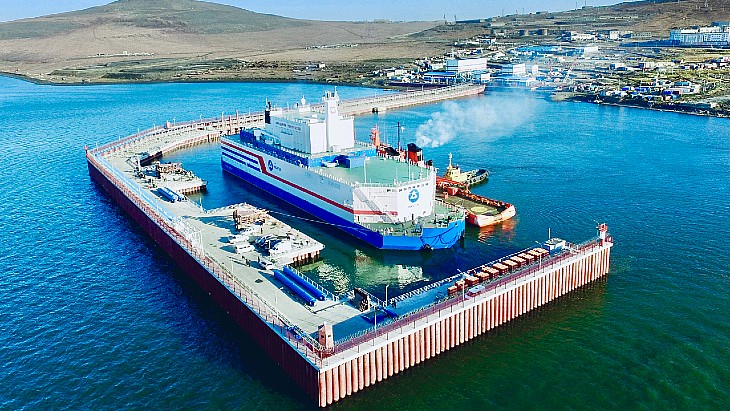.jpg?ext=.jpg)
A rendering of a NuScale plant (Image: NuScale)
Utah Associated Municipal Power Systems (UAMPS) and NuScale Power Corporation have mutually agreed to terminate the Carbon Free Power Project (CFPP). The project to build NuScale small modular reactor units at a site near Idaho Falls had been pencilled in for operation by 2029.
"Despite significant efforts by both parties to advance the CFPP, it appears unlikely that the project will have enough subscription to continue toward deployment. Therefore, UAMPS and NuScale have mutually determined that ending the project is the most prudent decision for both parties," the parties said.
In July, CFPP LLC had applied to the US Nuclear Regulatory Commission (NRC) for a Limited Work Authorisation to begin early construction activities for the proposed plant on a site at the Idaho National Laboratory. Early-scope construction had been expected to begin in mid-2025.
UAMPS - a political subdivision of the state of Utah - identified a preferred site near Idaho Falls for the construction of a small modular reactor (SMR) in 2016. In 2020 the US Department of Energy approved a multi-year cost share award to CFPP LLC of up to USD1.4 billion to help demonstrate and deploy a NuScale power plant there, and work on the combined licence application began in 2021. UAMPS had been working towards submitting a combined construction and operating licence application to the NRC in January 2024, for a plant with six of NuScale's 77 MWe power modules to generate 462 MWe of electricity. NuScale placed its first order for long-lead materials for the plant with Korean firm Doosan Enerbility at the end of 2022.
"This decision is very disappointing given the years of pioneering hard work put into the CFPP by UAMPS, CFPP LLC, NuScale, US Department of Energy, and the UAMPS member communities that took the leadership role to launch the CFPP," said UAMPS CEO and General Manager Mason Baker. "Yet, this decision is the best course for the UAMPS members participating in the CFPP and doing what is best for those member communities will always be the guiding light in such decisions."
NuScale's VOYGR SMR - a pressurised water reactor with all the components for steam generation and heat exchange incorporated into a single 77 MWe unit - is the first SMR design to have received approval from the NRC and is under consideration for construction in various countries around the world including in Poland, where a plan by copper and silver producer KGHM Polska Miedź SA's to build a power plant based on NuScale Power's SMR has been approved by the Ministry of Climate and Environment.
NuScale President and CEO John Hopkins said the company's UAMPS work and its partnership with the DOE had enabled it to advance its Power Modules to a proven SMR technology that has regulatory approval and is in active production.
"Our work with CFPP over the past 10 years has advanced NuScale technology to the stage of commercial deployment. Reaching that milestone is a tremendous success which we will continue to build on with future customers," he said. "NuScale will continue with our other domestic and international customers to bring our American SMR technology to market and grow the US nuclear manufacturing base, creating jobs across the US. We thank UAMPS for the collaboration that has enabled this advancement."
The US Nuclear Energy Institute said the decision was "disappointing" but understandable. "Despite significant effort and hard work from both parties, the project has been unable to reach the subscription levels required for this phase of the project to continue toward deployment," the organisation said.
"Although the Carbon-Free Power Project is not moving forward at this time, it is not a question of the promise of next-generation nuclear but rather the comfort that the customer has in being the first to bring the product to market. The demand for reliable, affordable, and clean generation is growing around the world," it added.
NuScale Power was the first SMR developer to undergo a business combination to accelerate the commercialisation of its technology. In May 2022, it merged with Spring Valley Acquisition Corp to create the world's first publicly traded SMR technology provider.
CFPP LLC is a wholly owned subsidiary of UAMPS, a project-based consortium providing power supply, transmission and other services to its 50 members across the states of Utah, Arizona, California, Idaho, Nevada, New Mexico, and Wyoming. UAMPS is a political subdivision of the State of Utah.Researched and written by World Nuclear News. Idaho SMR project terminated : New Nuclear - World Nuclear New


